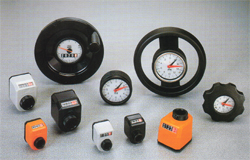 |
|
| ROTARY CONTROLS | |
|
The ELESA-CLAYTON position indicators are used to control a wide range of machine functions and can provide the precise reading of the controlled parameter or a number that can be ued to obtain the value using special conversion tables. |

|
| Examples of some of the most common applications include: | |
| - control of the linear distance of machine components | |
| -
control of the number of revolutions per minute in speed variators - control of tilting angles - position of machine components (printing machine cylinders, bar or steel pipe flattening rollers) - control of valve openings for fluid flows |
|
 |

 |